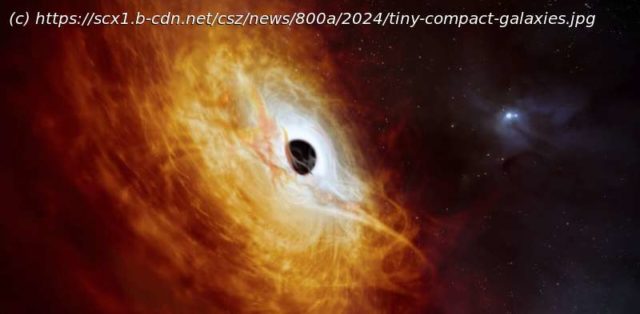Astronomers exploring the faraway universe with the James Webb Space Telescope, NASA’s most powerful telescope, have found a class of galaxies that challenges even the most skillful creatures in mimicry—like the mimic octopus. This creature can impersonate other marine animals to avoid predators. Need to be a flatfish? No problem. A sea snake? Easy.
Astronomers exploring the faraway universe with the James Webb Space Telescope, NASA’s most powerful telescope, have found a class of galaxies that challenges even the most skillful creatures in mimicry—like the mimic octopus. This creature can impersonate other marine animals to avoid predators. Need to be a flatfish? No problem. A sea snake? Easy.
When astronomers analyzed the first Webb images of the remote parts of the universe, they spotted a never-before-seen group of galaxies. These galaxies—some hundreds of them and called the Little Red Dots—are very red and compact, and visible only during about 1 billion years of cosmic history. Like the mimic octopus, the Little Red Dots puzzle astronomers, because they look like different astrophysical objects. They’re either massively heavy galaxies or modestly sized ones, each containing a supermassive black hole at its core.
However, one thing is certain. The typical Little Red Dot is small, with a radius of only 2% of that of the Milky Way galaxy. Some are even smaller.
As an astrophysicist who studies faraway galaxies and black holes, I am interested in understanding the nature of these little galaxies. What powers their light and what are they, really?
Astronomers analyze the light our telescopes receive from faraway galaxies to assess their physical properties, such as the number of stars they contain. We can use the properties of their light to study the Little Red Dots and figure out whether they’re made up of lots of stars or whether they have a black hole inside them.
Light that reaches our telescopes ranges in wavelength from long radio waves to energetic gamma rays. Astronomers break the light down into the different frequencies and visualize them with a chart, called a spectrum.
Sometimes, the spectrum contains emission lines, which are ranges of frequencies where more intense light emission occurs. In this case, we can use the spectrum’s shape to predict whether the galaxy is harboring a supermassive black hole and estimate its mass.
Домой
United States
USA — IT Hidden, compact galaxies in the distant universe—searching for the secrets behind the...






